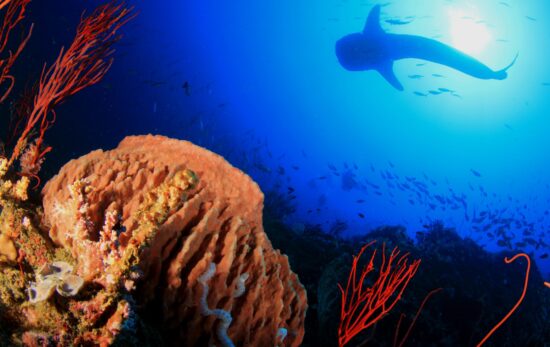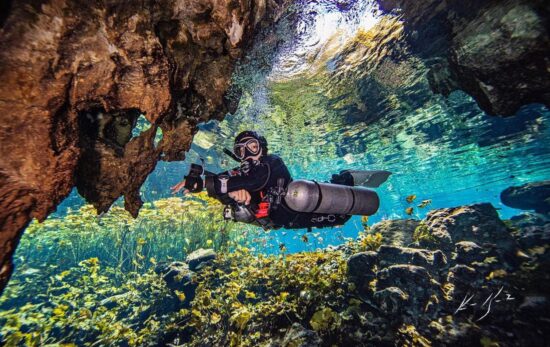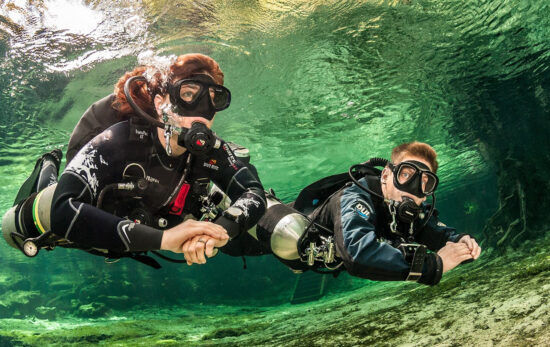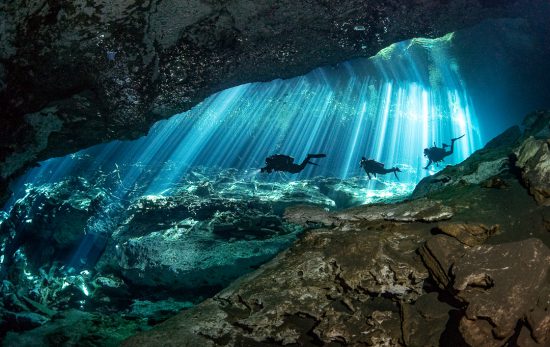Humans have always been intrigued with cave exploration. Today, the story is no different. We crave to know what lies beneath our feet and yearn to see just how the underwater world works. What weird and wonderful creatures reside in the eternal darkness of underwater caverns? For those interested in exploration of overhead underwater environments, cavern diving awaits.
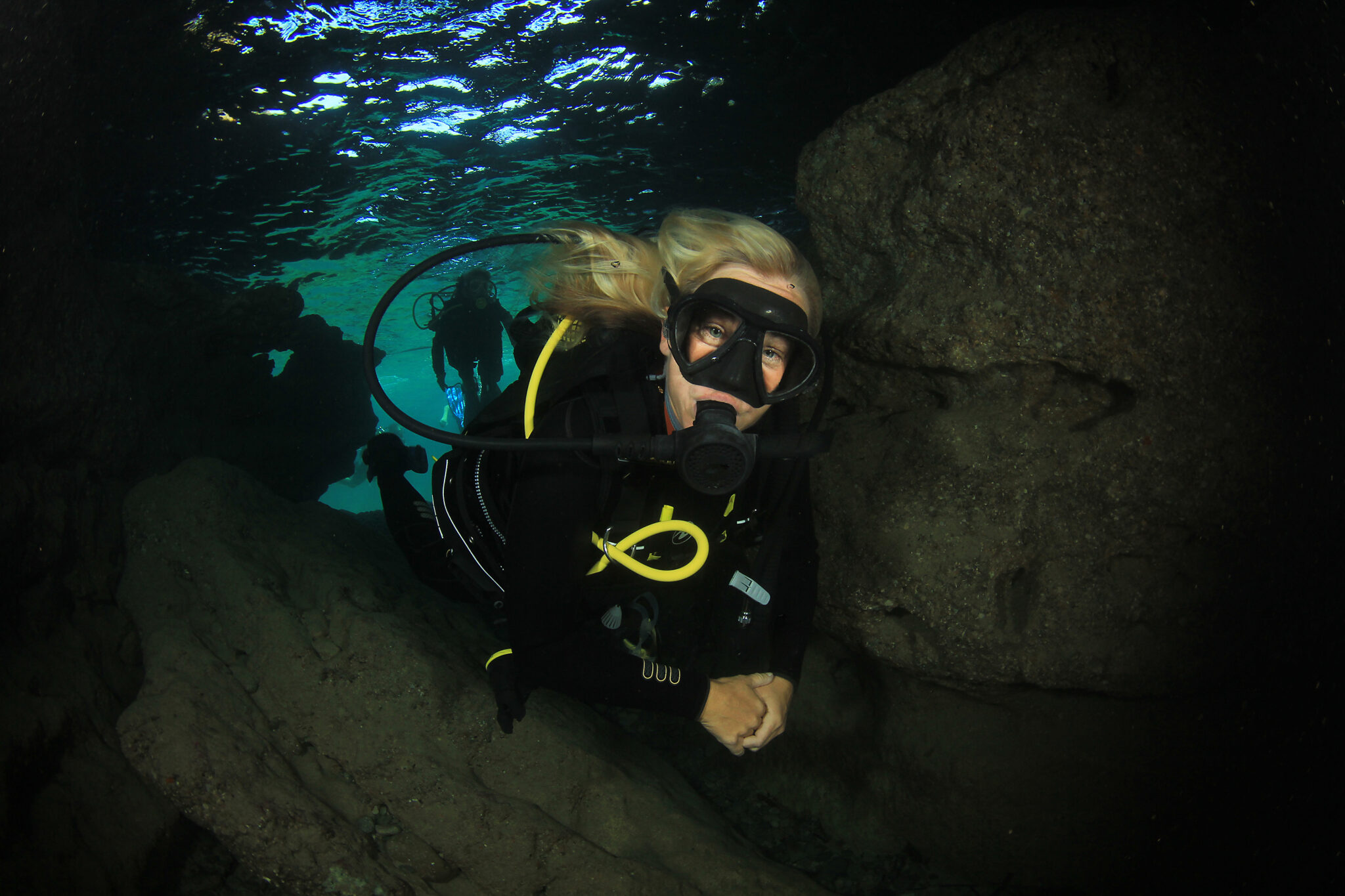
Exploring the Underworld of Cavern Diving
Before going on a cavern dive you need to be properly trained. Cavern diving is nothing to sniff at: inexperienced divers can get themselves into a world of trouble in this dark and inhospitable world. Be sure to listen to any given instructions and always keep in the back of your mind the danger involved in cavern diving. Cavern diving is challenging, but endlessly rewarding.
In order to dive in caverns, you should get your cavern diver certification course through PADI. In order to be prepared for your dive you will need to purchase several specialty items: two dive lights and a line and a reel, in addition to your basic gear.
How Low (While Cavern Diving) Can You Go?
Alghero, Sardinia
If you don’t want to go through all of the cave training, or would like to try an easier cavern to start out with, head to Sardinia. Found off the shore of Alghero are a series of large saltwater caves. Don’t miss out on Neptune’s Grotto, the most famous caves near Alghero. The formations within this hidden wonder (as well as the exceptionally clear water), is certain to take your breath away.
Within many of the caverns you can find Mediterranean red coral cuddled up to fascinating stalagmites and stalactites. Here, the conger eels and lobsters grow to twice the size of their reef-dwelling neighbors. The large caverns provide shelter and plenty of room to grow, making an ideal place to make their home.
Visit from April to October, as winter conditions are far too rough for comfortable travel.
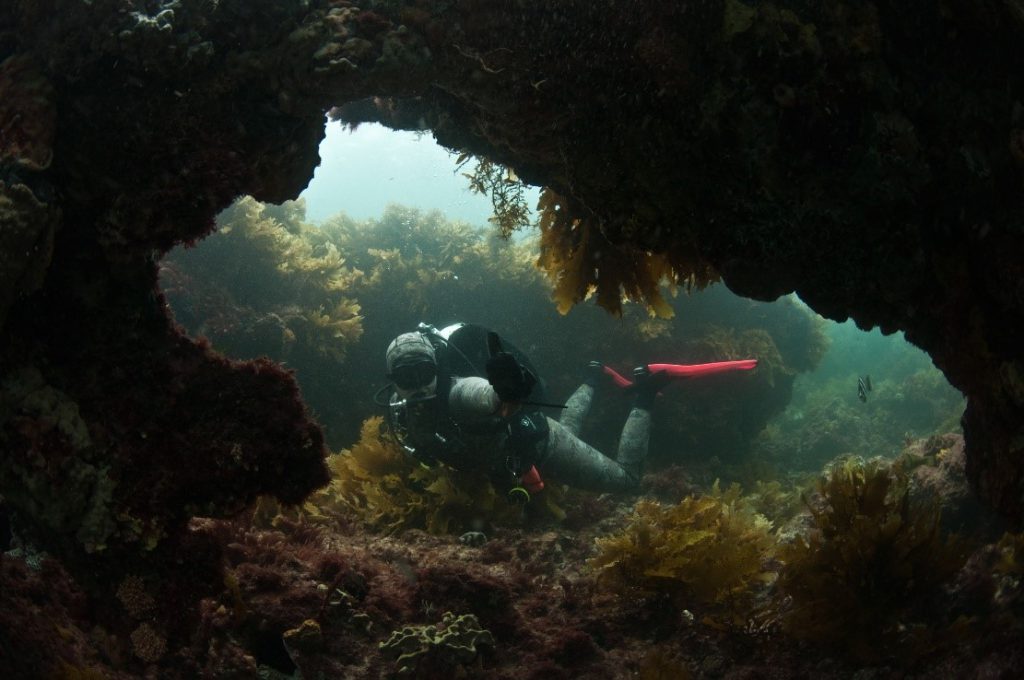
Cavern Diving in Blue Lake City, South Australia
Appearances can be deceiving. Found out in the farmland of rural Australia, this cave is referred to as “The Shaft.” Nothing more than a table sized opening in the middle of a pasture, this small entryway leads to a large cavern, illuminated only by the pinprick of light that you descended through. Surrounded by a tight formation of rocks, this cave is not for the claustrophobic. Special training is required before descending into the cave, as any stirred up sediment could compromise the visibility for several days.
Come any time: the water temperature remains a relaxing 15°C year round.
Emergence du Ressel, France
Bring your diver propulsion vehicle to this wide, comfortable cave in France. You can zoom through the cave, which meanders from the depth of 9 meters to 18 meters. The cave’s tunnel forms a loop, though not many have completed the 2.5 mile circle.
There are several different caves found in this area of Europe, giving you the opportunity to spend some time in several of the region’s cave systems. Warm water and air temperatures, in addition to less rainfall, makes summer the best time to visit.
Orda Cave, Russia
Only one word can describe Orda Cave: Epic. Found almost 1,500 km from Moscow, Orda boasts incredibly cold water and massive rooms, and is the world’s largest crystal cave. The walls are made of gypsum, a white, nearly translucent mineral that creates delicate formations. These gossamer creations are fleeting, and the chalky crystals dissolve and reform constantly, making each dive unique.
Bear in mind, the water is a constant 5°C throughout the year, regardless of the air temperature. Luckily, this means that you can visit any time of year, though the snow melt in March makes for muddled visibility.
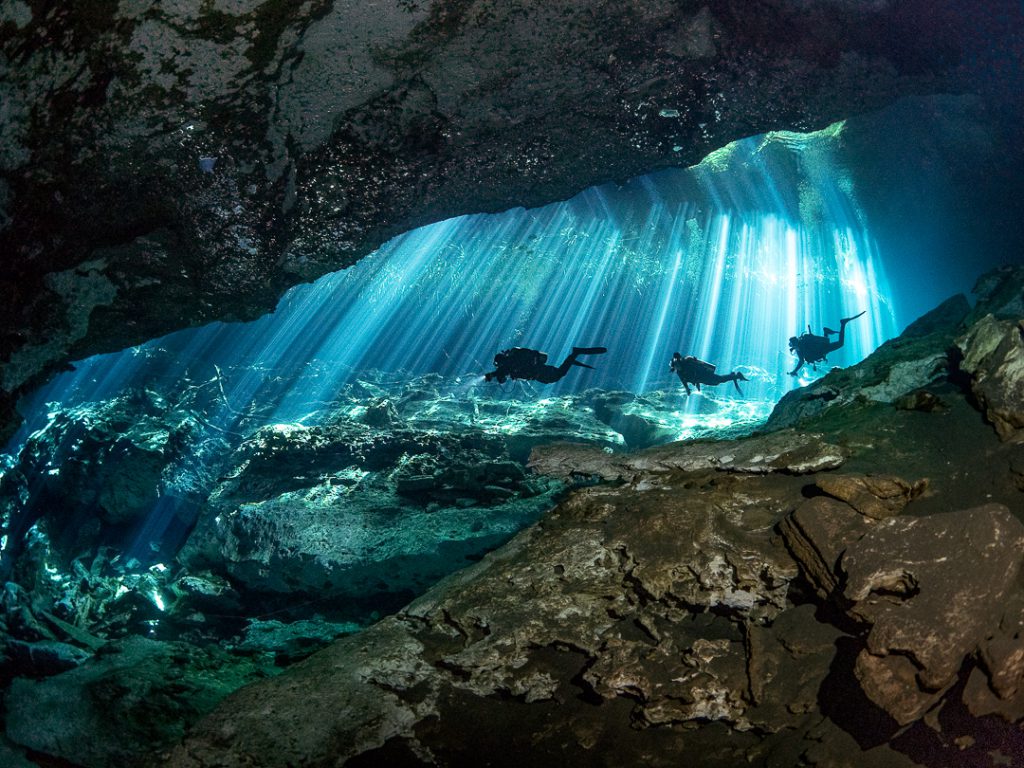
Tulum Cenotes, Mexico
Mexico’s cenotes are some of the most breathtaking geological formations in the world. Here, the land and the sky meet the water, all confusing themselves in a patchwork of dark and light, creating a landscape unlike any other.
There are thousands upon thousands of miles of underwater cave system, and more is being discovered every year. Some areas are completely untouched by humans, while others have remained pristine since prehistoric times.
The weather is beautiful throughout the year, so visit any time to get your cavern diver certification.
Discovering Underwater Cavern Diving
Scuba diving can be accomplished in many caves around the world. There are endless discoveries to be made beneath the surface. Dive beneath the Earth’s crust to encounter the marvelous and exciting cave formations, all waiting to be explored.
Get started with your PADI Cavern Diver certification today.
This blog was originally written by Bridget Pearson and published on the Diviac Magazine.

